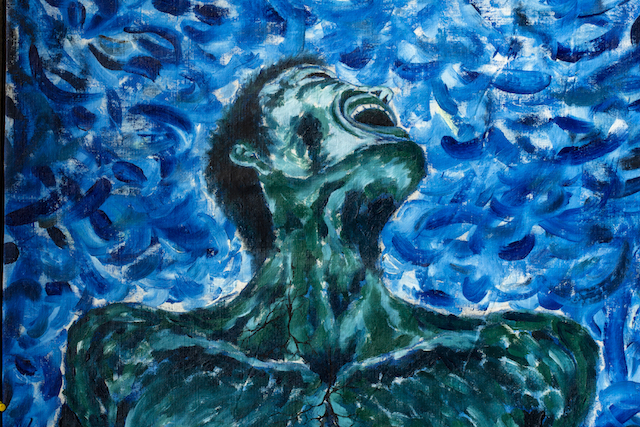
“Life will only change when you become more committed to your dreams than you are to your comfort zone.” ~Billy Cox
It might sound like a senseless paradox to say that the “bad” or “dark” things about you are actually your “light” or “positive” qualities. However, this isn’t just a feel-good platitude; it’s literally true. The things we struggle with the most are our greatest sources of empowerment.
Because this process is not exactly front and center of modern mental health and wellness movements, committing to your own healing can seem daunting and hopeless. Few people have truly learned how to welcome their painful, suppressed emotions, listen to what they have to say, and come out the other side stronger.
But in today’s world, it’s become increasingly difficult to avoid, suppress, and force ourselves into fake states of positivity. Clearly, our “negative” emotions are bubbling to the surface where they cannot be ignored any longer.
We see anger and pain overflowing into the social and political sphere, in schools where violence occurs, and all over the news. According to ScienceDaily, “121 million people worldwide are impacted by depression, and 850,000 commit suicide every year.”
It’s no wonder so many of us get stuck in apathy, pessimism, and distractions. Life is challenging us right now, and the first necessary step is to actually acknowledge that we are in pain. This sounds incredibly simple, yet so many people choose to fight their symptoms rather than committing to understanding them.
On social media I see a lot of hashtags exemplifying our resistance to pain, like #depressionwarrior and #fightanxiety. And while it’s totally understandable to want to conquer the pain you’ve felt for so long, mental illness is not something to be battled and conquered. It doesn’t need to be fought, but rather, listened to and respected.
Just as the physical body has innate intelligence, so does the emotional system. We don’t want to wage war against the very emotions that are trying to alert us of a problem and walk us through the solution. From a basic state of resistance, no healing can occur.
In 2018, I gave up on a painful relationship, moved to a new apartment, started a new job, and finished writing my first real book. I grew up in so many ways, and processed more trauma and healed more aspects of myself than I ever thought possible. For the first time, my growth and progress were unmistakable—I didn’t need to squint to see that I had become wiser, stronger, and more capable in the real world.
But my radical transformation was not exciting or easy. It wasn’t a fight, and it sure wasn’t the kind of glamorous story of triumph that goes viral nowadays. My life circumstances pushed me into a sort of hibernation—a state where I spent most of my time reading, meditating, resting, crying, and just doing whatever I had to do.
This is the thing: True healing doesn’t look cool. It’s not a fighting and a conquering, but a softer, more intuitive process. This is why society resists it so much.
True healing requires us to be counter-cultural. It requires us to be awkward, to stay in on Friday nights, to take strange trips or buy strange things that we can’t quite explain to other people.
Healing requires vulnerability and radical allegiance to yourself.
This is why much of my healing took so long. Prior to 2018, I wasn’t ready to commit to myself no matter what. I was too impressionable and willing to change for other people.
The biggest lesson I learned is that my mental “illness” was not really illness or dysfunction at all. In truth, my emotions were messengers I had been ignoring, judging harshly, and trying to get rid of. My negative emotions were on my side, not against me.
Negative emotions are not something you need to fight or fix any more than you’d need to fight or fix your immune system as it tries to ward off an infection. This is the great misunderstanding of our time.
Many people never heal from mental illness because they mistake the symptoms for the problem. The symptoms are your obvious negative emotions, but the root problems are hidden. For example, you may be depressed because you don’t express yourself freely. On top of this, you may have a deep-seated fear that if you express yourself, you’ll be scolded.
There are often several layers of negative beliefs and fears in our subconscious (or “shadow”), but all we ever see are the symptoms (e.g. depression, anxiety, etc.). I lived much of my life trying to solve my emotions until I learned a much more effective approach: listening to my emotions.
So how do we actually heal?
1. Listen to your mental “illness.”
This is the simplest first step you can take. Every time you feel unpleasant symptoms arise, no matter what they are, make time that day to stop and listen. You can do this through a simple meditation in which you quiet your mind and let the emotions have space to express themselves.
If it suits you better, you can also write all your current negative emotions on a page. There’s no need to worry about any emotion besides what is activated in the moment. What are you currently struggling with? Oftentimes, it will be connected to your other issues any way. Let that particular emotion speak.
2. Ask your mental “illness” questions.
Another thing I learned is how surprisingly easy it is to get answers from your subconscious mind. As soon as these emotions are given time, space, attention, and unconditional love, they waste no time revealing what you need to know.
Maybe the message is simply that you need more time in your day to rest, or that you need to leave a serious relationship. Whether big or small, the guidance you receive will help you shift your life in a way that soothes your symptoms. This is the beginning of true healing.
3. Practice gratitude for your symptoms.
This is probably the most challenging thing on the list. Your symptoms really are guiding you and alerting you to what is out of alignment in your life. However, we’ve spent so much time suppressing and denying them that they’ve caused us significant pain.
Our symptoms are like children throwing tantrums. If we don’t listen, they get louder and angrier. This is why we need to “make up” with our symptoms just as we would with a friend with whom we had a fight.
Once you literally start to notice how your symptoms are subtly guiding you toward solutions, it becomes much easier to feel grateful for them (and trust them!). This step took me a bit of practice, but over time I found that I could have gratitude for my symptoms without any effort or forcing.
4. Commit to the long haul.
At first this may seem discouraging. But when I look back, I see that most of my wasted time was spent desperately trying to rush to the “perfect” life. I wanted to magically arrive at a place where I had no emotional or physical issues, and everything looked pristine on the surface. It was during these periods that I felt the most dissatisfaction and pain.
Committing to the long haul means you have decided that no matter what, you will not abandon yourself. You will not try to skip out on true progress and growth for a quick and easy “fix.” You will not try to appear perfect from the outside.
Once you make this commitment, your healing can occur faster and with more joy and ease throughout the process.
So if you are at your wits end, pause. Stop resisting your circumstances and try a new approach. What if your emotions weren’t out to get you? What if they honestly wanted to help move you forward?
About Brianna Johnson
Brianna runs a depth psychology platform called Exist Better. Her School of Self is designed to help individuals graduate from mainstream groupthink, integrate painful shadow aspects, and learn how self-empowerment actually works.













 Though I run this site, it is not mine. It's ours. It's not about me. It's about us. Your stories and your wisdom are just as meaningful as mine.
Though I run this site, it is not mine. It's ours. It's not about me. It's about us. Your stories and your wisdom are just as meaningful as mine. 